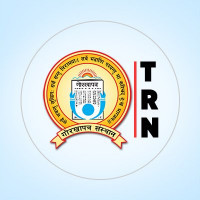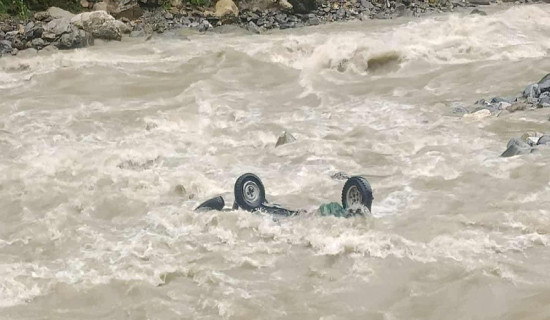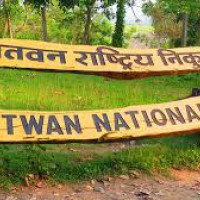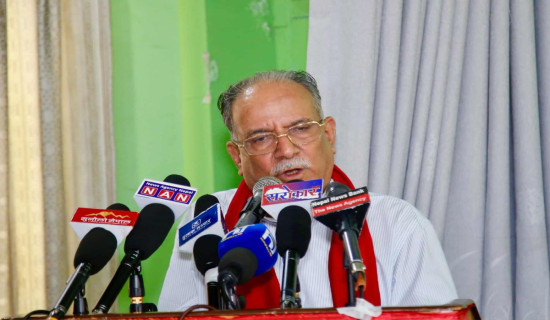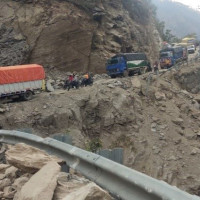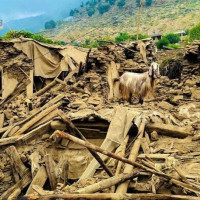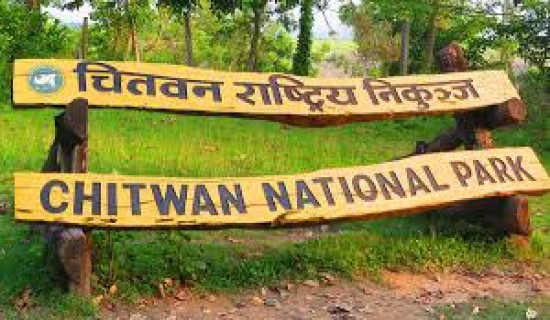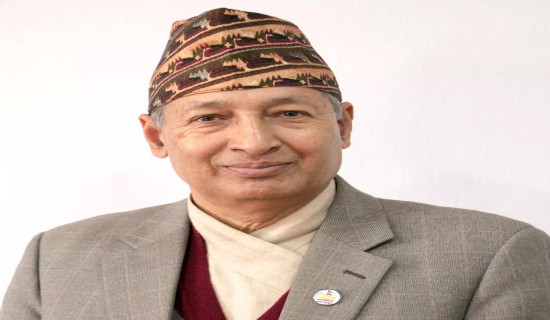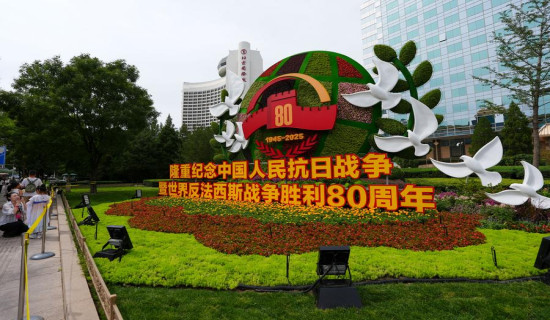- Monday, 1 September 2025
Lifestyle of Bankariya community changes for better as women start soap production
By Anjali Thapa, Hetauda, June 27: Bankariya, Nepal's most endangered indigenous community living at Manahari rural municipality in Makawanpur district, has gradually started living in brick and cement houses.
The living standard of the people of this community has improved, and they have started building cement and concrete houses. Before, they used to live in makeshift shelters having roofs of banana leaves and corrugated tin sheets.
The education, women empowerment and development of enterprises have brought change in lifestyle and living standard of this community.
Suntali Bankariya, 40, who has now become an entrepreneur from the use of raw materials and herbs that are found surrounding their houses, has one-storey concrete house.
She has enrolled her two sons in school and she becomes busy to produce soap during the day time. Also the Chairperson of Natural Resources Women Rights Group, Manahari-4, Bankariya shared that an organization, Green Foundation Nepal, had imparted training them to become an entrepreneur.
She opined, "Earlier, I used to be afraid to even speak. Now, I am able to advertise my own products and able to impart training to others."
Twenty-one people in her group have been producing soap. Stating that their living style has been changed with income, Suntali mentioned that they sometimes eat wild fruits and roots due to their enjoyment.
Similarly, 70-year-old Hasta Bahadur Bankariya mentioned that they have been making good income from soap business that has been helping them to survive easily.
Likewise, Maya Bankariya shared that they have been producing soap along their farming and making good income from it.
Women in the settlement have been producing soap from neem leafs and mugwort (tetipati) that are wastage on river banks and in the forests.
Entrepreneurship has given income but problems remain
Santoshi Bankariya expressed her dismay over her community being deprived of the land-ownership papers, despite their being traditionally land worshippers. She demanded that the State should not make them landless like this.
The temporary land-ownership papers that the government provided to the Bankariyas in 2005 for a period of 20 years have become invalid. She says that they are currently living on land the term of ownership over which has expired and the community does not have rights over that land.
"I had learned the skill of manufacturing soap, and I wanted to become an entrepreneur using the skills I know. But I couldn't register my business without the necessary land-ownership documents. After not being able to register the business, work stopped for three months. The ward chairman helped create an environment for industry registration by offering his land. How long can we continue like this?"
Similarly, Sangita Bankariya opined that what the Bankariya community needs is not allowances but employment. She said that having the land-ownership documents and employment opportunities would be better than the allowance provided by the government.
"The government claims to provide free education to the children of the Bankariyas from grades 1 to 10. But we have been paying school fees for our children every month. Who should we tell about this?" Sangita complained.
She expressed sadness for the Bankariya children not receiving the free education promised by the government. Like Santoshi, Sangita is also concerned about their community's landlessness problem.
The Bankariya ethnic group is an endangered community that resides only in Makawanpur. The Bankariyas started to build houses and settle in a small settlement near Twangra Khola riulet in Manahari Rural Municipality-4 only a few decades ago. This settlement is known as the Bankariya settlement.
Before settling in the village, the Bankariya people used to live in the Chure forest. Now the village is populated by 83 people of 21 households.
The lifestyle of the Bankariyas who used to dwell in the Chure forests and lead a nomadic life, searching for roots, fishing, and hunting wildlife, has now changed.
Their economic condition has somewhat improved after the government started providing a monthly social security allowance of four thousand per person to the Bankariayas since the last some years.
For eighteen years, the marginalized indigenous Bankariya people living in Musedhap, Manahari-4 of Makawanpur have no land registered in their name.
The government had provided them a patch of land belonging to a leasehold forest at this place in 2005 for them to build shelters after the Bankariyas demanded land for settlement.
They have been demanding collective land-ownership certificates in the same place they reside. Currently, 93 Bankariyas are living in 25 households in Musedhap.
‘Bankariya’ is one among the 10 endangered tribes of Nepal. The 'Bankariya' tribe was listed as an endangered indigenous group in 2001. (RSS)


